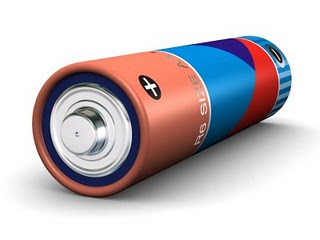Leslie Gordon of Machine Design.com writes on the possibilities of printing electronics, and specifically batteries.
We all know that 3D printers can easily create cases for electronics, but what about the electronics themselves? This is difficult to achieve on traditional one-material-at-a-time 3D commercial printers, but experiments being undertaken by the fab kit makers is beginning to yield some results. According to Gordon, it’s now possible to print a battery:
Researchers developed a battery with zinc as the anode and air as the cathode because of the design’s simplicity.
First came development of a zinc-powder suspension that did not clog the syringe nozzle. Next came designing the separation layer between the anode and cathode. In commercial batteries, this layer is often paper. In contrast, the layer in the zinc-air battery is made from ceramic slurry or a synthetic resin.
These 3D printed batteries are apparently only half the capacity of commercial equivalents, but it’s definitely a great start. We think the most interesting aspect would be the ability to print batteries of any shape – suitable to include within designs with limited volume.



this is class! but howe much power can it produce and what about heat dissipation
Version 1.0 is 50% as good as our current best. I think that's well enough for proof-of-concept, the rest is just a matter of how much money they throw at the problem.
As Tim Mayer mentioned, Leslie Gordon's article is in fact referring to my work at Cornell University, where I demonstrated 3D printed Zn-Air and alkaline batteries using a Fab@Home machine. Please see the list of publications at the bottom of the page here: http://ccsl.mae.cornell.edu/Multi_material_3D_Printing
I think Dr. Malone has already accomplished battery printing with the Fab@Home machine.